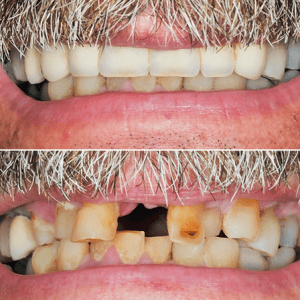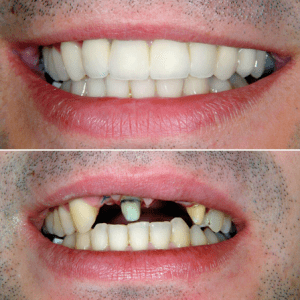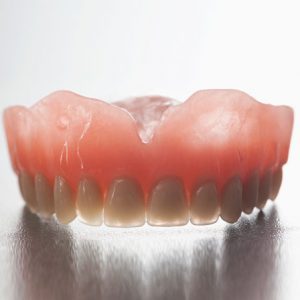Missing teeth can be a big concern, especially when it comes to how your smile looks to you and to other people. If you have a missing tooth, it can be embarrassing to smile, talk, and interact with people. Incomplete smiles can affect your ability to maintain self confidence, find love, and even find a job.
For the best dental restoration to replace your missing teeth, consider getting dental implants.
What Are Dental Implants?
A dental implant is a prosthetic medical device that is implanted into the jawbone beneath the gum. The prosthesis contains two main components: the implant itself and the restorative crown. This dental restoration is the most advanced solution to tooth loss as of today.
The most important component is the dental implant itself. It is made of titanium, the strongest element known to science. Not only is strength the biggest advantage of titanium for implants, but it also integrates with the human bone in a natural way, as though it were a real part of the body. This process is known as osseointegration. When the implant osseointegrates, it becomes tightly bonded to the alveolar bone, making it virtually irremovable like real human teeth.
The restorative crown serves as the replacement for the visible part of the tooth, which is also called the crown. This crown is just like the regular dental crown, usually made of porcelain, for the best aesthetic results. To connect the crown with the implant, an abutment will have to be attached to the implant. Abutments come in various materials, including metal and porcelain.
However, apart from the regular crowns, there are also screw-on crowns available from some dental implant manufacturers. These crowns have a hole inside where a screw will be inserted. The hole can be filled with bonding material or left open, although it can collect some debris. The advantage of screw-on crowns is that they can easily be replaced if damaged because they are not cemented, unlike the ones with an abutment.
Types Of Dental Implants
Depending on the number of missing teeth you have, there are also different kinds of dental implants options. These include:
Single Tooth Implants

Single-tooth implants are the perfect alternative to bridges; most dental implants are single-tooth restorations. With a single-tooth implant, the ratio of implant to crown is 1:1 (meaning one implant is to one crown). There are single-stage and two-stage installation procedures for this implant structure, although the two-stage option is more conventional.
Multiple Tooth Implants

For several missing teeth adjacent to each other, you can get multiple-tooth implants instead of partial dentures or cantilever bridges. These are also called “implant supported” bridges because the structure is similar to the more traditional bridge, but instead of using natural teeth as abutment, implants will be used. The ratio of this kind of implant can be either 1:2 (meaning one implant for every two crowns) or 2:3 (meaning two implants for every three crowns).
Overdentures

Overdentures, also known as all-on-four, are dentures which have been customized to fit onto implants. The entire denture can be supported by four implants distributed across the dental arch. For patients who are already wearing dentures, their old dentures can simply be converted into overdentures, reducing the overall expense of the procedure. However, the dentures will need to be in good shape and be reshaped to fit the implants.
Benefits Of Dental Implants
Dental implants, dentures, and bridges all provide aesthetically pleasing restorations for lost teeth. However, they work very differently from one another. Although they have similar benefits, such as smile improvement, facial shape retention, and natural looking prosthetic designs, they also have plenty of unique features. Compared to dentures and bridges, dental implants can offer the following benefits:
- Anatomical restoration: The design of the implant replicates the natural anatomy of the tooth with the implant serving as the root. No other restoration can produce this kind of effect.
- Equal bite force distribution: Dentures and bridges can’t apply force when biting and chewing because they are separate from the body. In these two cases, the gums are the ones that do all the work. However, because of osseointegration, dental implants can apply and reciprocate biting and chewing forces, allowing the teeth to distribute the force equally among all functional teeth.
- Protection against gum recession: Because the implant is embedded within the bone and the gums, the body recognizes it as a real tooth and the gums maintain their structure. With dentures and bridges, the gums will continue to recede as the prosthetics rub across the top of the gum.
- Flexibility: Overdentures can be either removable or anchored, giving patients the freedom to wear the prosthetics as they wish. Some implant components vary to fit the specific needs of every patient. Implants even have different threads and grooves to fit the bone structure of the patients.
